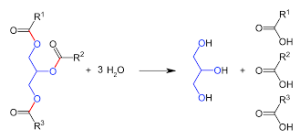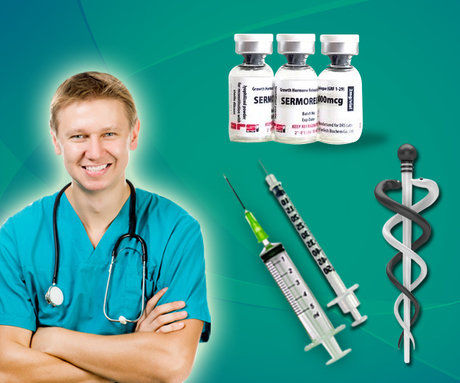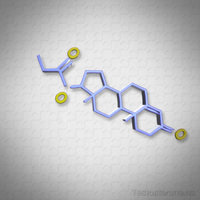The Soleus Pushup
Diabetes is on the rise. The Center for Disease Control has stated that in America:
- 37 million people have diabetes
- This means 1 out of every 10 people has the deadly disease
- 1 in 5 are unaware they have diabetes
- 96 million adults – more than 1 in 3 – have prediabetes
- More than 8 in 10 adults are unaware that they have prediabetes
- The grim tally of the cost of medical care and lost work for diabetics is a
 whopping 327 billion annually
whopping 327 billion annually - The chance of premature death for adults with diabetes is 60% higher than for non-diabetics
- People with diabetes incur twice the medical costs than folks without the crippling affliction
- Severe health issues occur far more often in diabetics: kidney failure, heart attack, blindness, stroke, and amputation of toes, feet, and legs.
Hopefully, the point is well-taken: diabetes is a severe, life-threatening disease. It can be controlled with insulin injections, but it is better to ward off the disease before it strikes.
To date, the best diabetes prevention methods are exercise, weight loss, and intermittent fasting. But there might be another weapon to add to the diabetes-fighting arsenal…
A small muscle in the calf
The calf comprises two main muscles: the gastrocnemius and the soleus. The gastrocnemius is the outer muscle and is the larger of the two. The soleus is the inner calf  muscle. So what’s the big deal?
muscle. So what’s the big deal?
Simply this: the small, often-overlooked soleus muscle can significantly boost metabolic health in the entire body. Here’s how.
A recent study conducted by Marc Hamilton, a professor of Health and Human Performance at the University of Houston, has found a novel, unique way of activating the soleus by the “soleus pushup” (SPU) that can regulate blood glucose even better than the earlier-mentioned methods.
The method he uncovered raises oxidative metabolism, which is the process oxygen uses to burn metabolites such as blood glucose or fats instead of glycogen that fuels other muscles. This process depends on the energy needs of the muscle when it is stimulated.
“We never dreamed that this muscle has this type of capacity. It’s been inside our bodies all along, but no one ever investigated how to use it to optimize our health until now,” said Hamilton. “When activated correctly, the soleus muscle can raise local oxidative metabolism to high levels for hours, not just minutes, and does so by using a different fuel mixture.”
Hamilton. “When activated correctly, the soleus muscle can raise local oxidative metabolism to high levels for hours, not just minutes, and does so by using a different fuel mixture.”
The study comprised 25 subjects of different genders, ages, Body Mass Indexes (BMIs), and current physical conditions. The experiments used a random, cross-over design.
The experiment was simple: perform the soleus pushup. The subjects were wired, masked, and given blood samples before, during, and after performing SPUs for several hours.
How to perform the soleus pushup
The soleus pushup is a simple movement. Sit with your feet flat on the floor, your muscles relaxed, and your knees bent close to a 90-degree angle. Raise your heel and keep the ball of your foot on the floor. When the heel reaches the top of its range of motion, drop it back to the starting position, and repeat. That’s it.
The goal is to simultaneously shorten the calf muscle while the soleus is activated by its motor neurons. The beauty of the movement is that it can be done almost anywhere at any time. Watching your favorite television show, sitting at your desk at work, or anywhere else. Since the movement is casual, it is not noticeable.
Bodybuilders will recognize the SPU as identical to a seated calf raise with weight.
The results of the study
The volunteers had a 52% improvement in blood glucose and a 60% drop in insulin over the 3 hours following the ingestion of a glucose drink. The SPU lowered very low-density lipoproteins (VLDL) and triglycerides while raising fat and carbohydrate oxidation due to  the stimulation of the soleus.
the stimulation of the soleus.
If everyone, from fitness fanatics to couch potatoes, would remember to do this simple, easy movement, the number of kidney failures, amputations, heart attacks, diabetes, dementia, and so many other adverse conditions directly attributed to sitting passively on the recliner would drop steeply.
Why the SPU can boost metabolism
Here is the key: muscle biopsies discovered there was negligible glycogen involved in fueling the soleus. Rather than glycogen, the soleus can use other fuels such as blood glucose and fats. Glycogen is usually the main type of carbohydrate that fuels muscular exercise.
“The soleus’ lower-than-normal reliance on glycogen helps it work for hours effortlessly without fatiguing during this type of muscle activity because there is a definite limit to muscular endurance caused by glycogen depletion,” said Hamilton. “As far as we know, this is the first concerted effort to develop a specialized type of contractile activity centered around optimizing human metabolic processes.”
The new approach of stimulating soleus muscle metabolism is also effective at increasing the usual rate of fat metabolism in the fasting period between meals, which lowers fat levels in the blood (VLDL triglyceride).
The SPU movement resembles walking, but it is not. Walking primarily relies on the larger gastrocnemius muscle, which conserves energy. Hamilton’s method reverses that and forces the soleus to step up and work harder for longer. “The soleus pushup looks simple  from the outside, but sometimes what we see with our naked eye isn’t the whole story. It’s a very specific movement that right now requires wearable technology and experience to optimize the health benefits,” said Hamilton.
from the outside, but sometimes what we see with our naked eye isn’t the whole story. It’s a very specific movement that right now requires wearable technology and experience to optimize the health benefits,” said Hamilton.
Bodybuilders know that they need to develop both calf muscles. However, some feel that their approach has been backward. The calf muscles are notoriously challenging to grow.
Traditional advice is to begin a calf workout with standing calf raises to work both the gastrocnemius and the soleus, primarily the gastrocnemius. Then finish with seated calf raises to isolate the soleus.
At first, this seems logical. However, most bodybuilders have skinny calves, and some have resorted to reversing the order, with reportedly good results. This further illustrates the difference between walking, where the soleus is inactive, and stimulating the soleus when the knees are bent.
Hamilton believes this is the “most important study” ever undertaken at his Metabolic Innovations lab at UH. He said the findings could answer many health problems related to sitting, low metabolism, and inactivity. The average American sits about 10 hours a day. Excess sitting is devastating to good health, no matter what shape a person is in.
A low metabolic rate while seated is particularly problematic for folks at high risk for age-associated metabolic afflictions like metabolic syndrome and type 2 diabetes.
Hamilton said inactive muscles require less energy than most people think, saying it’s “one  of the most fundamental, yet overlooked issues” guiding the way toward discovering metabolic solutions to prevent some age-associated chronic diseases.
of the most fundamental, yet overlooked issues” guiding the way toward discovering metabolic solutions to prevent some age-associated chronic diseases.
“All of the 600 muscles combined normally contribute only about 15% of the whole-body oxidative metabolism in the three hours after ingesting carbohydrates. Even though the soleus is only 1% of the body weight, it can raise its metabolic rate during SPU contractions to easily double, even sometimes triple, the whole-body carbohydrate oxidation. We are unaware of any existing or promising pharmaceuticals that come close to raising and sustaining whole-body oxidative metabolism at this magnitude.”
However, there are a few downsides to SPUs.
During the research, the subjects spent a total of 4.5 hours performing the exercise. If this is the required time for SPUs to deliver these benefits, that would be a game-changer since most people don’t have that much free time.
Also, Hamilton added that additional publications are being created to teach people how to do the SPU without the complex, expensive lab equipment used in the study.
The answer to the first issue is similar to exercise. Just because you don’t have the time to spend several hours a day in the gym does not mean you should not get moving.
spend several hours a day in the gym does not mean you should not get moving.
A small amount is better than nothing, and the same applies here. A few minutes of SPUs and seated calf raises at the gym a few times a week are better than nothing.
As far as the second issue, the movement is simple and basic. You don’t have to watch videos on how to raise your heels when you are sitting...just do it!
The SPU might be able to make the sayings “sitting is the new smoking” and “sitting too much is worse than exercising too little” distant memories!
Contact us for a FREE, no-obligation discussion of the incredible benefits of Hormone Replacement Therapy (HRT)!
Reference
https://neurosciencenews.com/soleus-pushups-metabolism-21471/
Contact Us For A Fast And Professional Response

- Cheyenne Sermorelin for HGH Deficiency [Last Updated On: April 6th, 2023] [Originally Added On: November 3rd, 2018]
- Milwaukee Sermorelin for HGH Deficiency [Last Updated On: April 19th, 2023] [Originally Added On: November 3rd, 2018]
- Madison Sermorelin for HGH Deficiency [Last Updated On: February 14th, 2023] [Originally Added On: November 3rd, 2018]
- Green Bay Sermorelin for HGH Deficiency [Last Updated On: May 10th, 2023] [Originally Added On: November 3rd, 2018]
- Charleston Sermorelin for HGH Deficiency [Last Updated On: February 26th, 2023] [Originally Added On: November 3rd, 2018]
- Vancouver Sermorelin for HGH Deficiency [Last Updated On: October 2nd, 2023] [Originally Added On: November 3rd, 2018]
- Tacoma Sermorelin for HGH Deficiency [Last Updated On: May 28th, 2023] [Originally Added On: November 3rd, 2018]
- Spokane Sermorelin for HGH Deficiency [Last Updated On: March 23rd, 2023] [Originally Added On: November 3rd, 2018]
- Seattle Sermorelin for HGH Deficiency [Last Updated On: May 16th, 2023] [Originally Added On: November 3rd, 2018]
- Bellevue Sermorelin for HGH Deficiency [Last Updated On: March 6th, 2023] [Originally Added On: November 3rd, 2018]
- Virginia Beach Sermorelin for HGH Deficiency [Last Updated On: March 23rd, 2023] [Originally Added On: November 3rd, 2018]
- Richmond Sermorelin for HGH Deficiency [Last Updated On: April 23rd, 2023] [Originally Added On: November 3rd, 2018]
- Portsmouth Sermorelin for HGH Deficiency [Last Updated On: February 18th, 2023] [Originally Added On: November 3rd, 2018]
- Norfolk Sermorelin for HGH Deficiency [Last Updated On: October 12th, 2023] [Originally Added On: November 3rd, 2018]
- Newport News Sermorelin for HGH Deficiency [Last Updated On: January 7th, 2023] [Originally Added On: November 3rd, 2018]
- Hampton Sermorelin for HGH Deficiency [Last Updated On: April 17th, 2023] [Originally Added On: November 3rd, 2018]
- Chesapeake Sermorelin for HGH Deficiency [Last Updated On: March 27th, 2023] [Originally Added On: November 3rd, 2018]
- Arlington, Virginia Sermorelin for HGH Deficiency [Last Updated On: July 24th, 2023] [Originally Added On: November 3rd, 2018]
- Alexandria Sermorelin for HGH Deficiency [Last Updated On: May 27th, 2023] [Originally Added On: November 3rd, 2018]
- Montpelier Sermorelin for HGH Deficiency [Last Updated On: May 2nd, 2023] [Originally Added On: November 3rd, 2018]
- West Valley City Sermorelin for HGH Deficiency [Last Updated On: December 27th, 2023] [Originally Added On: November 3rd, 2018]
- West Jordan Sermorelin for HGH Deficiency [Last Updated On: April 27th, 2023] [Originally Added On: November 3rd, 2018]
- Salt Lake City Sermorelin for HGH Deficiency [Last Updated On: July 11th, 2023] [Originally Added On: November 3rd, 2018]
- Provo Sermorelin for HGH Deficiency [Last Updated On: March 11th, 2023] [Originally Added On: November 4th, 2018]
- Wichita Falls Sermorelin for HGH Deficiency [Last Updated On: May 26th, 2023] [Originally Added On: November 4th, 2018]
- Waco Sermorelin for HGH Deficiency [Last Updated On: February 19th, 2023] [Originally Added On: November 4th, 2018]
- San Antonio Sermorelin for HGH Deficiency [Last Updated On: November 5th, 2023] [Originally Added On: November 4th, 2018]
- Round Rock Sermorelin for HGH Deficiency [Last Updated On: November 11th, 2023] [Originally Added On: November 4th, 2018]
- Richardson Sermorelin for HGH Deficiency [Last Updated On: February 7th, 2023] [Originally Added On: November 4th, 2018]
- Plano Sermorelin for HGH Deficiency [Last Updated On: July 18th, 2023] [Originally Added On: November 4th, 2018]
- Pasadena Sermorelin for HGH Deficiency [Last Updated On: September 7th, 2023] [Originally Added On: November 4th, 2018]
- Midland Sermorelin for HGH Deficiency [Last Updated On: November 22nd, 2023] [Originally Added On: November 4th, 2018]
- Mesquite Sermorelin for HGH Deficiency [Last Updated On: October 22nd, 2023] [Originally Added On: November 4th, 2018]
- McKinney Sermorelin for HGH Deficiency [Last Updated On: December 21st, 2023] [Originally Added On: November 4th, 2018]
- McAllen Sermorelin for HGH Deficiency [Last Updated On: February 17th, 2023] [Originally Added On: November 4th, 2018]
- Lubbock Sermorelin for HGH Deficiency [Last Updated On: September 10th, 2023] [Originally Added On: November 4th, 2018]
- Lewisville Sermorelin for HGH Deficiency [Last Updated On: September 7th, 2023] [Originally Added On: November 4th, 2018]
- Laredo Sermorelin for HGH Deficiency [Last Updated On: August 10th, 2023] [Originally Added On: November 4th, 2018]
- Killeen Sermorelin for HGH Deficiency [Last Updated On: February 23rd, 2023] [Originally Added On: November 4th, 2018]
- Irving Sermorelin for HGH Deficiency [Last Updated On: April 29th, 2023] [Originally Added On: November 4th, 2018]
- Houston Sermorelin for HGH Deficiency [Last Updated On: October 2nd, 2023] [Originally Added On: November 4th, 2018]
- Grand Prairie Sermorelin for HGH Deficiency [Last Updated On: May 18th, 2023] [Originally Added On: November 4th, 2018]
- Garland Sermorelin for HGH Deficiency [Last Updated On: March 7th, 2023] [Originally Added On: November 4th, 2018]
- Fort Worth Sermorelin for HGH Deficiency [Last Updated On: October 28th, 2023] [Originally Added On: November 4th, 2018]
- El Paso Sermorelin for HGH Deficiency [Last Updated On: January 8th, 2023] [Originally Added On: November 4th, 2018]
- Denton Sermorelin for HGH Deficiency [Last Updated On: February 21st, 2023] [Originally Added On: November 4th, 2018]
- Dallas Sermorelin for HGH Deficiency [Last Updated On: April 30th, 2023] [Originally Added On: November 4th, 2018]
- Corpus Christi Sermorelin for HGH Deficiency [Last Updated On: July 30th, 2023] [Originally Added On: November 4th, 2018]
- Carrollton Sermorelin for HGH Deficiency [Last Updated On: February 4th, 2023] [Originally Added On: November 4th, 2018]
- Brownsville Sermorelin for HGH Deficiency [Last Updated On: April 10th, 2023] [Originally Added On: November 4th, 2018]
- Beaumont Sermorelin for HGH Deficiency [Last Updated On: November 27th, 2023] [Originally Added On: November 4th, 2018]
- Austin Sermorelin for HGH Deficiency [Last Updated On: May 13th, 2023] [Originally Added On: November 4th, 2018]
- Arlington Sermorelin for HGH Deficiency [Last Updated On: April 16th, 2023] [Originally Added On: November 4th, 2018]
- Amarillo Sermorelin for HGH Deficiency [Last Updated On: May 14th, 2023] [Originally Added On: November 4th, 2018]
- Abilene Sermorelin for HGH Deficiency [Last Updated On: December 26th, 2023] [Originally Added On: November 4th, 2018]
- Nashville Sermorelin for HGH Deficiency [Last Updated On: March 16th, 2023] [Originally Added On: November 4th, 2018]
- Murfreesboro Sermorelin for HGH Deficiency [Last Updated On: May 18th, 2023] [Originally Added On: November 4th, 2018]
- Memphis Sermorelin for HGH Deficiency [Last Updated On: November 24th, 2023] [Originally Added On: November 4th, 2018]
- Knoxville Sermorelin for HGH Deficiency [Last Updated On: July 16th, 2023] [Originally Added On: November 4th, 2018]
- Clarksville Sermorelin for HGH Deficiency [Last Updated On: July 14th, 2023] [Originally Added On: November 4th, 2018]
- Chattanooga Sermorelin for HGH Deficiency [Last Updated On: May 15th, 2023] [Originally Added On: November 4th, 2018]
- Sioux Falls Sermorelin for HGH Deficiency [Last Updated On: March 5th, 2023] [Originally Added On: November 4th, 2018]
- Columbia Sermorelin for HGH Deficiency [Last Updated On: April 25th, 2023] [Originally Added On: November 4th, 2018]
- Charleston, South Carolina Sermorelin for HGH Deficiency [Last Updated On: October 13th, 2023] [Originally Added On: November 4th, 2018]
- Providence Sermorelin for HGH Deficiency [Last Updated On: April 23rd, 2023] [Originally Added On: November 4th, 2018]
- Pittsburgh Sermorelin for HGH Deficiency [Last Updated On: November 10th, 2023] [Originally Added On: November 4th, 2018]
- Philadelphia Sermorelin for HGH Deficiency [Last Updated On: May 5th, 2023] [Originally Added On: November 4th, 2018]
- Erie Sermorelin for HGH Deficiency [Last Updated On: August 21st, 2023] [Originally Added On: November 4th, 2018]
- Allentown Sermorelin for HGH Deficiency [Last Updated On: February 2nd, 2023] [Originally Added On: November 4th, 2018]
- Salem Sermorelin for HGH Deficiency [Last Updated On: September 25th, 2023] [Originally Added On: November 4th, 2018]
- Portland Sermorelin for HGH Deficiency [Last Updated On: June 29th, 2023] [Originally Added On: November 4th, 2018]
- Gresham Sermorelin for HGH Deficiency [Last Updated On: March 22nd, 2023] [Originally Added On: November 4th, 2018]
- Eugene Sermorelin for HGH Deficiency [Last Updated On: April 30th, 2023] [Originally Added On: November 4th, 2018]
- Tulsa Sermorelin for HGH Deficiency [Last Updated On: September 18th, 2023] [Originally Added On: November 4th, 2018]
- Oklahoma City Sermorelin for HGH Deficiency [Last Updated On: August 22nd, 2023] [Originally Added On: November 4th, 2018]
- Norman Sermorelin for HGH Deficiency [Last Updated On: March 23rd, 2023] [Originally Added On: November 4th, 2018]
- Toledo Sermorelin for HGH Deficiency [Last Updated On: January 29th, 2023] [Originally Added On: November 4th, 2018]
- Dayton Sermorelin for HGH Deficiency [Last Updated On: July 2nd, 2023] [Originally Added On: November 4th, 2018]
- Columbus, Ohio Sermorelin for HGH Deficiency [Last Updated On: July 25th, 2023] [Originally Added On: November 4th, 2018]
- Cleveland Sermorelin for HGH Deficiency [Last Updated On: April 29th, 2023] [Originally Added On: November 4th, 2018]


















